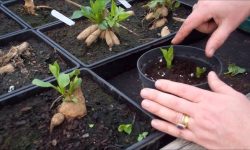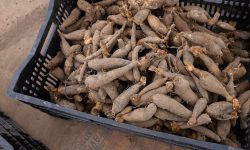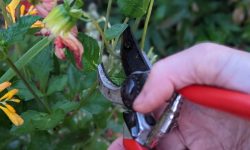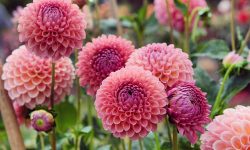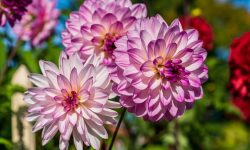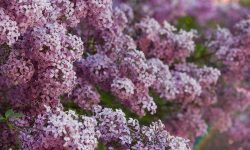Dahlias are among the most stunning flowers you can grow, known for their endless range of colors, shapes, and sizes. Each bloom seems to have its own personality, from small pompons to massive dinner-plate varieties that command attention. But what many gardeners don’t realize is that growing dahlias from seed opens the door to entirely new and unique varieties. Each seed carries a different genetic makeup, meaning no two seedlings will produce identical flowers. Harvesting and planting dahlia seeds gives you the exciting chance to create new hybrids that have never existed before — your very own custom blooms.
Learning how to harvest dahlia seeds properly is both an art and a science. While most gardeners propagate dahlias from tubers, collecting seeds is a rewarding way to explore the plant’s natural diversity. With the right timing and technique, you can gather, dry, and store viable seeds that will sprout into an array of colors and forms next season. This guide will walk you through the full process, from identifying seed pods to growing your own seedlings. Whether you’re a beginner or an experienced grower, harvesting dahlia seeds lets you witness the joy of discovery in your garden.
Understanding Dahlia Seed Production
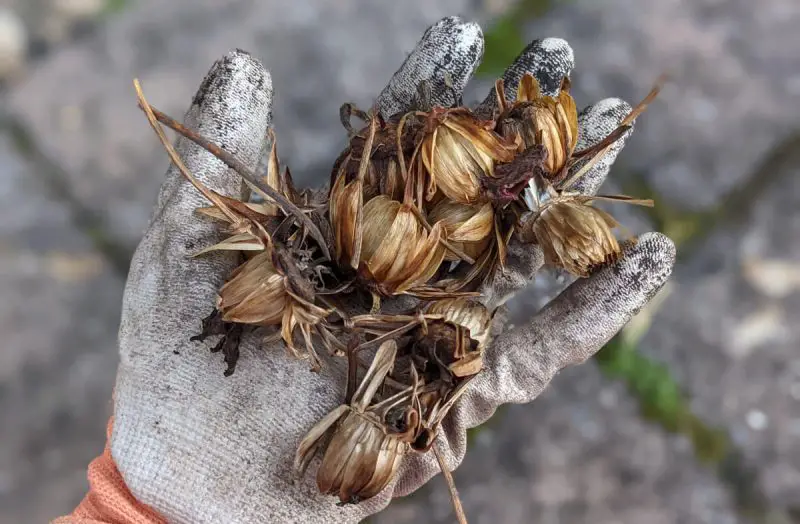
Dahlias produce seeds through natural pollination, which occurs when pollen from one flower fertilizes the ovules of another. Each bloom has both male and female parts, making cross-pollination common, especially when multiple varieties grow nearby. This is why no two dahlia seeds are exactly alike. Every seed carries a unique genetic combination, which determines the flower’s color, shape, and size. Unlike tubers, which create identical clones, seeds offer endless variation and the potential to develop entirely new hybrids. This genetic diversity is what makes growing dahlias from seed such a fascinating and creative process.
However, not all dahlias produce viable seeds. Double-flowered varieties often have tightly packed petals that make pollination difficult. Single or semi-double types are usually more successful at forming seed pods because their centers are open and accessible to pollinators like bees and butterflies. After pollination, the center of the flower, known as the disk, begins to swell as seeds form inside. This process takes several weeks, and during that time, it’s important to let the blooms mature fully on the plant instead of cutting them for display. Seed development continues until the flower head dries and turns brown, signaling that the seeds inside are ready to harvest.
Temperature and sunlight also play vital roles in seed production. Dahlias need warm, sunny weather to develop mature seeds, as excessive moisture or early frost can interfere with the process. In cooler climates, allowing blooms to dry naturally can be challenging, so gardeners often cover them with mesh or lightweight fabric to protect from rain. Understanding how and when dahlias produce seeds helps you plan the harvest correctly. Once you recognize the signs of maturity, you’ll be ready to collect seeds that can grow into truly one-of-a-kind flowers next season.
Identifying and Selecting Dahlias for Seed Harvest
Not every dahlia in your garden will produce high-quality or viable seeds, so selecting the right plants is the first and most important step. When choosing dahlias for seed harvest, focus on healthy, vigorous plants that show strong growth and consistent blooming. These plants are more likely to pass on desirable traits such as vibrant colors, sturdy stems, and disease resistance. While tubers reproduce exact clones, seeds are the result of natural genetic mixing, meaning even flowers from the same plant can produce completely different offspring. Choosing the best parents increases your chances of growing unique but high-performing dahlias.
Single and open-centered dahlias are ideal for seed collection because their structures allow easier access for pollinators. In contrast, fully double or heavily petaled varieties rarely produce seeds, as their inner parts are often hidden. Look for blooms that have faded naturally but still maintain a firm, round center. Once pollination occurs, the middle of the flower — the seed head — starts to enlarge slightly. Over time, the petals dry and fall off, leaving behind a cone-shaped structure filled with developing seeds. Patience is key here, as it can take up to six weeks for the seeds inside to fully mature and dry.
Environmental factors also influence which dahlias make the best seed producers. Plants exposed to full sunlight and consistent warmth develop stronger, more mature seeds than those grown in shaded or cool areas. Avoid collecting seeds from plants that appear weak, diseased, or infested by pests, as their seeds may carry those problems into the next generation. By carefully observing your garden and selecting the healthiest, most vibrant dahlias, you’ll ensure that your harvested seeds have the best genetic potential for creating striking and resilient new varieties next season.
When and How to Harvest Dahlia Seeds
Timing is everything when it comes to harvesting dahlia seeds. Seeds are only viable when they have fully matured inside the seed head, which happens after the bloom has completely dried out on the plant. Typically, this process takes about six to eight weeks after flowering, depending on temperature and weather conditions. The best sign that seeds are ready to harvest is when the flower head turns brown, dry, and papery, with no trace of green left. At this stage, the petals have fallen away, revealing a hardened cone at the center. Harvesting too early results in immature seeds that will not germinate, so patience is crucial.
To collect the seeds, gently cut the dried flower head from the stem using sterilized garden scissors. Place the heads in a paper bag or breathable container to prevent moisture buildup. Avoid plastic bags, as they trap humidity and can lead to mold. Once collected, allow the seed heads to air-dry indoors for several more days in a warm, well-ventilated space. When the heads are completely dry, carefully break them apart with your fingers. Inside, you’ll find small, elongated seeds that resemble thin, dark slivers — each one capable of producing a unique plant.
During harvesting, it’s a good idea to label seeds from different parent plants separately, especially if you’re growing multiple varieties. Each cross-pollinated seed may yield unpredictable colors or forms, so keeping records helps track your favorite results. After separating the seeds, remove any remaining chaff or debris and check for firm, fully developed ones. Flat or pale seeds are likely nonviable and can be discarded. Harvesting on dry, sunny days helps prevent moisture contamination and ensures better storage quality. With care and attention to timing, you’ll collect strong, viable seeds ready to become the foundation of new, one-of-a-kind dahlia varieties.
Drying and Cleaning Dahlia Seeds for Storage
Drying Dahlia Seeds
Proper drying is essential to preserve the quality and longevity of your dahlia seeds. After harvesting, spread the seeds and remaining seed heads in a single layer on a clean, dry paper towel or mesh tray. Choose a warm, airy location away from direct sunlight. Excessive heat or harsh light can damage the seed’s outer coating and reduce germination potential. The drying process typically takes about a week, though it can vary depending on humidity levels. You’ll know the seeds are fully dry when they feel hard, crisp, and no longer flexible between your fingers.
During this period, stir or shake the seeds gently every day to ensure even drying and prevent clumping. Avoid drying seeds near sources of moisture like kitchens or bathrooms, as damp conditions can lead to mold growth. For gardeners in humid regions, using a small fan or dehumidifier nearby can help speed up the process. Once the seeds are completely dry, remove any leftover petals or husks still attached to them. Fully dried seeds store much better and remain viable longer. Taking the time to dry them properly ensures they’ll germinate reliably when planted in spring.
Cleaning Dahlia Seeds
Cleaning your dahlia seeds is the next critical step before storage. Even after drying, seeds may contain remnants of plant material that can attract pests or harbor moisture. Start by gently rubbing the dried flower heads between your hands to release any seeds that remain trapped inside. Use a fine sieve or mesh screen to separate the seeds from chaff, husks, and dust. The goal is to isolate firm, well-formed seeds with a dark, mature color. Discard any that appear flat, pale, or damaged, as they are unlikely to germinate successfully.
To ensure purity, you can blow gently over the seeds or use a light fan to remove lightweight debris. If you harvested seeds from several plants, label them clearly to identify parent varieties or colors later. Clean, well-labeled seeds make it easier to select and test new hybrids in the next season. Once cleaning is complete, place the seeds in small paper envelopes or breathable seed packets. Avoid plastic containers at this stage, as residual moisture can cause rot. Clean seeds are the foundation of healthy new dahlia generations and make the next steps of storage and planting much more successful.
How to Store Dahlia Seeds Properly
Once your dahlia seeds are fully dry and clean, proper storage becomes the key to maintaining their viability until planting season. Seeds that are stored incorrectly may lose their ability to germinate, especially if exposed to heat, light, or moisture. The ideal storage environment is cool, dark, and dry. Place your labeled seed envelopes inside an airtight container such as a glass jar or sealed tin. Adding a small packet of silica gel or a few grains of dry rice inside the container helps absorb any excess humidity. Avoid storing seeds in plastic bags without ventilation, as trapped moisture can lead to mold or premature sprouting. Consistent low humidity and stable temperature conditions are essential for keeping the seeds healthy.
Temperature control is one of the most important aspects of long-term storage. Dahlia seeds store best at around 40°F (4°C), which is roughly the temperature of most refrigerators. However, make sure to keep them in the main compartment, not the freezer or vegetable drawer, where moisture can accumulate. If you’re storing multiple seed varieties, separate each in its own labeled envelope to avoid confusion during planting season. Store your container away from light sources since prolonged exposure can weaken the seeds. When properly stored, dahlia seeds can remain viable for up to two or even three years, though their germination rate is highest within the first year.
Before planting season begins, take the seeds out of storage a few days early and let them adjust to room temperature. Sudden temperature changes can cause condensation, which might damage the seeds. Inspect them carefully to ensure there’s no mold or discoloration before sowing. Keeping detailed notes about when and how seeds were stored helps track their age and performance over time. With proper storage, your dahlia seeds will remain strong, ready to sprout into brand-new varieties that showcase the beauty and unpredictability of nature’s artistry.
How to Germinate Dahlia Seeds Successfully
Germinating dahlia seeds is a rewarding process that allows you to witness the beginning of new, one-of-a-kind varieties. The best time to start germination is about six to eight weeks before the last expected frost in your area. Begin by filling shallow seed trays or small pots with a light, well-draining seed-starting mix. Avoid using heavy garden soil, as it can retain too much moisture and suffocate the seedlings. Lightly moisten the soil before sowing, ensuring it feels damp but not soggy. Sprinkle the seeds evenly across the surface and gently press them into the soil, covering them with a thin layer no deeper than one-quarter inch. Because dahlia seeds need warmth to sprout, maintain a consistent temperature between 70°F and 75°F (21°C–24°C).
Keep the trays in a bright area but out of direct sunlight until the seeds germinate. You can cover them with a clear plastic lid or plastic wrap to retain humidity, but be sure to remove it once sprouts appear. Most dahlia seeds germinate within seven to ten days, though some may take a little longer. Once the seedlings emerge, provide plenty of light to prevent them from becoming leggy. A sunny windowsill or grow light placed six inches above the seedlings works well. Keep the soil slightly moist but never waterlogged — consistent, gentle watering supports steady growth. If the seedlings appear crowded, thin them carefully by removing weaker ones, leaving the strongest plants spaced about two inches apart.
After two to three weeks, when the seedlings have developed their first set of true leaves, they are ready for transplanting into individual pots. This gives each young dahlia enough room to grow strong roots. Continue to keep them in a warm, bright environment, watering when the top layer of soil feels dry. Before moving them outdoors, harden them off gradually by placing them outside for a few hours each day to adjust to natural conditions. Once the risk of frost has passed, your young dahlias will be ready to plant in the garden, where they will grow into beautiful, never-before-seen varieties born from your own harvested seeds.
Caring for Seed-Grown Dahlias in Their First Season
Transplanting Seedlings Outdoors
Once your dahlia seedlings are strong and the danger of frost has passed, it’s time to transplant them into the garden. Choose a bright, sunny location that receives at least six hours of direct sunlight daily. The soil should be rich, loose, and well-draining to encourage deep root growth. Before planting, prepare the area by mixing compost or aged manure into the soil to boost fertility. Space each plant about twelve inches apart to allow proper air circulation and give them room to expand. When transplanting, handle seedlings gently by the leaves rather than the stems to prevent breakage.
After planting, water the seedlings thoroughly to help them settle into their new environment. For the first week, keep the soil consistently moist but not saturated, as young dahlias are still developing strong roots. Mulching around the base helps retain moisture and regulate temperature. In areas with strong winds, use small stakes to support young plants until they establish themselves. Gradually, the seedlings will adapt to outdoor conditions and begin rapid growth. Once settled, they’ll soon produce their first buds — the exciting sign of new, unique flowers you’ve grown from your own harvested seeds.
Feeding and Watering for Steady Growth
Nutrition and moisture are crucial during the first season of growth. Seed-grown dahlias are especially hungry for nutrients as they build tubers and prepare to bloom. Start feeding the plants about three weeks after transplanting with a balanced, low-nitrogen fertilizer, such as 5-10-10. Nitrogen promotes leafy growth, but phosphorus and potassium encourage strong roots and vibrant flowers. Apply fertilizer every three to four weeks through the summer to maintain steady development.
Water consistently, providing deep soaking sessions rather than light sprinkles. This helps the roots grow downward, making the plants more resilient during dry spells. Avoid wetting the foliage, as constant moisture on leaves can lead to mildew or fungal problems. In hot climates, morning watering is best because it allows leaves to dry before nightfall. Proper feeding and watering ensure that your young dahlias remain healthy, strong, and ready to reward you with a colorful display of flowers — all from seeds you carefully harvested and nurtured.
Pinching and Early Maintenance
Pinching plays a vital role in shaping seed-grown dahlias during their first season. When plants reach about eight inches tall, use your fingers or clean shears to remove the top inch of growth above a pair of leaves. This encourages branching and prevents tall, spindly stems. As the plant matures, it will develop multiple shoots, each capable of producing its own blooms. Early pinching also helps balance growth, leading to a compact, bushy plant that’s more resistant to wind damage and produces a fuller, more attractive shape.
Regular maintenance is just as important during this stage. Keep the area around your dahlias free from weeds, as they compete for nutrients and moisture. Check plants regularly for pests such as aphids or spider mites and treat them promptly with insecticidal soap if needed. As the growing season progresses, remove any damaged or yellowing leaves to maintain good airflow and reduce disease risk. Consistent care during the first season ensures that your seed-grown dahlias establish strong roots and healthy tubers, setting the stage for even more spectacular blooms in the years to come.
Saving Seeds from Your New Dahlia Varieties
Harvesting seeds from the dahlias you’ve grown yourself is one of the most rewarding parts of gardening. Each plant you’ve nurtured from a seed has the potential to produce flowers unlike any other — and by collecting seeds from these new varieties, you can continue developing even more unique hybrids in future seasons. Begin by selecting the healthiest and most visually striking plants as seed parents. Look for flowers that stand out for their color, symmetry, or petal structure. These traits are likely to pass down to the next generation, though the results may still surprise you. Once you’ve identified your best performers, allow their blooms to stay on the plant well past their prime, giving the seed heads time to mature naturally.
As the flowers fade, the centers will begin to swell and dry, forming the cone-shaped seed heads that hold next season’s potential. Wait until the flower head turns fully brown and papery before cutting it from the stem. Harvesting too early can result in immature seeds that won’t germinate. Place the seed heads in a paper bag and store them in a warm, dry place for about a week to finish drying. Once fully dry, gently crumble the seed heads between your fingers to release the seeds. You’ll notice each one is small, dark, and slightly elongated — these are your new generation of dahlias. Separate any debris, keeping only the firm, mature seeds for storage.
Label each batch of saved seeds with identifying details such as the parent plant, bloom color, and the harvest date. If you’ve grown multiple varieties, these notes will help you track which combinations produce the most desirable results. Store the seeds in small paper envelopes inside an airtight container in a cool, dry location until spring. By repeating this process year after year, you can develop your own collection of dahlia strains, each one a personal creation. Saving seeds from your new varieties transforms your garden into a living experiment — where each season brings the promise of discovery, diversity, and endless floral beauty.
Why Growing Dahlias from Seed Is Worth It
Growing dahlias from seed is an experience unlike any other in gardening. While tubers guarantee identical plants, seeds open the door to endless creativity and surprise. Each seed holds a unique genetic combination, meaning every plant will produce something different — a new shade, a distinct petal shape, or an entirely unexpected bloom pattern. For gardeners who love experimentation, growing dahlias from seed offers the thrill of discovery and the satisfaction of creating something truly original. Watching the first flowers open from your own harvested seeds is an experience full of wonder and pride.
Beyond creativity, growing from seed is also practical and cost-effective. Buying tubers every year can become expensive, but a single dried flower head can produce dozens of seeds, each capable of growing into a new plant. Dahlias grown from seed also tend to adapt more quickly to local soil and climate, developing strong root systems and improved resilience. Many gardeners notice that seed-grown plants bloom slightly earlier in their first year, adding weeks of color to the garden. Collecting and replanting seeds each season turns your garden into a cycle of renewal and surprise.
Most importantly, growing from seed connects you more deeply with the life cycle of your plants. You move beyond simply maintaining flowers and become part of the process of evolution and selection. Over time, you might even create your own signature dahlia strain — a one-of-a-kind variety that can’t be found anywhere else. This personal connection makes every season more meaningful. For those who love both beauty and discovery, growing dahlias from seed is not just gardening — it’s art in bloom.
Troubleshooting Common Problems When Harvesting Dahlia Seeds
Immature or Nonviable Seeds
One of the most frequent problems gardeners encounter when harvesting dahlia seeds is collecting them before they are fully mature. Immature seeds are usually pale, flat, or soft and often feel slightly rubbery instead of firm. These seeds lack the internal structure needed for germination and will fail to sprout when planted. To avoid this, let the flower heads dry completely on the plant until they turn brown and papery. The petals should fall off naturally, leaving a dry, cone-shaped seed head. This process can take up to eight weeks, depending on the climate and the variety. Patience is key — rushing the harvest often leads to disappointment.
In cooler or wetter climates, the drying process may be interrupted by rain or early frost. In such cases, cut the nearly mature flower heads and bring them indoors to finish drying in a warm, well-ventilated space. Placing the heads on paper towels or mesh trays helps prevent moisture buildup. Seeds are fully mature when they are dark, firm, and slightly glossy. These seeds store better and retain their viability longer. Proper timing during harvest ensures that your effort produces viable seeds ready to germinate into strong, colorful new plants next season.
Poor Pollination and Low Seed Yield
Another common issue when harvesting dahlia seeds is poor pollination, which leads to few or no seeds forming at all. Dahlias depend heavily on pollinators such as bees, butterflies, and other insects to transfer pollen between flowers. Unfortunately, some double or decorative varieties have tightly packed petals that block access to the flower’s center, making pollination difficult. Open-centered or single-flowered dahlias are more likely to produce viable seeds because their reproductive parts are easily accessible. Ensuring a diverse mix of dahlia varieties in your garden helps attract more pollinators and boosts seed production.
If your garden lacks natural pollinators, hand-pollination can make a big difference. Use a soft brush or cotton swab to gently transfer pollen from one flower’s center to another. Mark the pollinated blooms so you know which to save for seed harvesting later. Consistent sunlight and warm temperatures also improve pollination rates, while excessive humidity can interfere with pollen transfer. For best results, pollinate flowers during mid-morning when conditions are dry, and bees are most active. Improved pollination not only increases your seed yield but also enhances genetic diversity, giving you more exciting new varieties to grow the following season.
Mold and Improper Storage
Even the most carefully harvested dahlia seeds can be ruined by mold if they aren’t dried and stored correctly. Mold usually develops when seeds still contain residual moisture or are kept in damp, poorly ventilated spaces. It appears as a fuzzy white or gray coating that quickly spreads and renders the seeds unusable. To prevent this, always dry your seeds for at least a week in a warm, airy environment. Spread them in a single layer on paper towels or mesh trays and stir them gently each day to ensure even airflow. Avoid drying near kitchens, bathrooms, or basements where humidity levels are high.
When completely dry, the seeds should feel hard and snap easily when bent. Store them in labeled paper envelopes or small parchment bags rather than plastic containers, which trap moisture. For added protection, place the envelopes in an airtight jar with silica gel or a small packet of rice to absorb humidity. Keep the container in a dark, cool place such as a closet or refrigerator set around 40°F (4°C). Check your stored seeds occasionally for signs of moisture or mold. With proper drying and storage, your seeds can remain viable for up to three years, ensuring a healthy start for your next generation of dahlias.
Frequently Asked Questions (FAQ) About Harvesting Dahlia Seeds
When is the best time to harvest dahlia seeds?
The best time to harvest dahlia seeds is six to eight weeks after the flowers bloom. Wait until the seed heads turn completely brown and dry on the plant. Harvesting too early will result in immature seeds that won’t germinate.
How do I know if dahlia seeds are mature?
Mature dahlia seeds are dark, firm, and elongated with a slightly glossy texture. Immature seeds are usually pale or flat. Always let the flower head dry naturally before removing it for seed collection.
Can I grow dahlias from any variety’s seeds?
Yes, but results vary. Open-centered and single-flowered varieties produce more viable seeds, while double or decorative dahlias often make few or none. Each seed-grown plant is unique and may differ from the parent flower.
How long can I store dahlia seeds?
When properly dried and stored in a cool, dark, and dry location, dahlia seeds can remain viable for up to three years. However, for the best germination rates, use them within the first year after harvest.
Do dahlias grown from seed produce tubers?
Yes. Dahlias grown from seed will develop small tubers by the end of their first growing season. You can dig them up and store them for replanting, just like traditional dahlia tubers.
Why grow dahlias from seed instead of tubers?
Growing from seed allows you to create brand-new varieties that don’t exist anywhere else. Each plant may produce a different bloom color or shape, making the experience exciting, creative, and deeply rewarding for any gardener.
Conclusion
Harvesting and growing dahlias from seed is a journey of creativity, patience, and discovery. Each seed holds the promise of something completely new — a color, a shape, or a bloom the world has never seen before. By learning when and how to collect, dry, and store seeds, you not only preserve beauty but also create it. Every plant becomes a reflection of your care and curiosity. With time, your garden transforms into a living gallery of unique dahlias — each one a masterpiece grown from your own hands and imagination.

